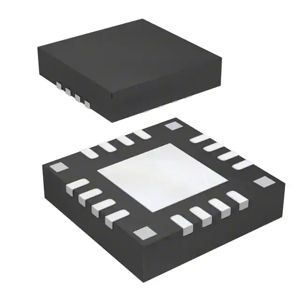
Motion Sensors - Accelerometers
Motion Sensors - Accelerometers: Precision in Motion Detection
Definition:
Motion Sensors - Accelerometers are specialized devices designed to measure acceleration forces, including static (gravity) and dynamic (movement or vibration) forces. These sensors are essential for detecting and analyzing motion in various applications, from consumer electronics to industrial systems. By converting mechanical motion into an electrical signal, accelerometers provide critical data for orientation, tilt, shock, and vibration detection.
Types of Motion Sensors - Accelerometers:
1. MEMS (Micro-Electro-Mechanical Systems) Accelerometers: Compact, low-power sensors widely used in smartphones, wearables, and IoT devices for motion tracking and gesture recognition.
2. Piezoelectric Accelerometers: Ideal for high-frequency vibration monitoring in industrial machinery, automotive testing, and aerospace applications.
3. Capacitive Accelerometers: Known for high accuracy and stability, commonly used in navigation systems, robotics, and medical devices.
4. Piezoresistive Accelerometers: Robust sensors capable of measuring high-impact forces, often applied in automotive crash testing and structural health monitoring.
Buying Recommendations:
When selecting an accelerometer, consider the following factors:
- Measurement Range: Choose a sensor that matches the expected acceleration levels (e.g., 2g for consumer devices vs. 500g for industrial impacts).
- Bandwidth: Ensure the sensor s frequency response aligns with your application (e.g., low-frequency for tilt sensing vs. high-frequency for vibration analysis).
- Output Type: Analog, digital (I2C/SPI), or wireless outputs should suit your system s integration requirements.
- Environmental Durability: For harsh environments, opt for models with robust enclosures and resistance to temperature, humidity, or shock.
Motion Sensors - Accelerometers are pivotal in enabling smart, responsive systems. Whether for innovation in consumer tech or precision in industrial automation, selecting the right accelerometer ensures optimal performance and reliability.
Filter and sort
Categories
SA-207 LN
FORCE BALANCE ACCELEROMETER/SEIS
FXLS8967AFR3
IC 3-AXIS ACCELEROMETER 10-DFN
PXLS70630AESR2
HIGH Y 1 AXIS ACCELEROMETER
AD22262-2
50G ACCELEROMETER
793V-35
ACCEL IEPE SENSOR
MMA2201KEGR2
MMA2201KE - MEDIUM-G, ANALOG ACC
ADXL359BCCZ-RL
TRI-AXIS DIGITAL XL10/20/40G PLA
ADXL359BCCZ-RL7
TRI-AXIS DIGITAL XL10/20/40G PLA
HV202
ACCEL IEPE SENSOR
SA-107 BHP
FORCE BALANCE ACCELEROMETER/RAIL
MMA5248KW
IC SENSOR ACCELEROMETER 16QFN
ADXL359BCCZ
TRI-AXIS DIGITAL XL10/20/40G PLA
PXLS60433AESR2
XTRINSIC 2 AXIS HIGH/HIGH XZ ACC
PXLS81733AESR2
2 AXIS HI/HI YZ
PXLS82322AESR2
2 AXIS MED/MED XY
MMA5224ALCWR2
ACCELEROMETER PSI5 16QFN
FXLS60422AESR2
XTRINSIC 2 AXIS MED/MED XZ ACCEL
ADXL371BCCZ-RL7
MICROPOWER THREE-AXIS 400G ACCEL
PXLS80333AES
2 AXIS HI/HI XY
PXLS64120AESR2
XTRINSIC 1 AXIS ACCELEROMETER

